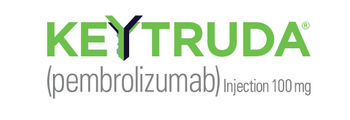
ICI-Chemo Combo Delivers More Benefit Than Harm, Even for High-Risk NSCLC Patients, Study Finds
Immune checkpoint inhibitors, such as Opdivo (nivolumab) and Keytruda (pembrolizumab), have been a huge advance in the treatment of non-small cell lung cancer. But it is open question whether they should be combined with traditional chemotherapy.
As immune checkpoint inhibitors (ICIs) have become a mainstay of advanced non-small cell lung cancer (NSCLC) treatment, clinicians still debate whether adding chemotherapy delivers more good than harm. New real-world evidence, published May 8 in
ICIs such as Opdivo (nivolumab), Keytruda (pembrolizumab) and Imfinzi (durvalumab) have transformed lung cancer care by recruiting elements of the immune system to recognize and attack tumors. Such therapies have shown remarkable efficacy, and the number of patients achieving long-term survival with ICIs is significantly higher than with older treatment options.
Unfortunately, though, ICIs can also cause the immune system to mistakenly attack healthy tissues and organs. Approximately 70% of people taking ICIs experience some degree of immune-related side effects, with approximately 10% developing life-threatening or chronic complications affecting the lungs, liver, heart or other organs.
Previous randomized trials show that pairing ICIs with chemotherapy improves response and progression-free survival but increases immune-related toxicity, compared to ICIs alone. However, clinical trials rarely include patients with certain preexisting conditions and those age 75 or older. Real-world research can capture data about a wider patient population.
To investigate the harm-benefit balance of ICI-chemotherapy combinations, researchers from Johns Hopkins analyzed Medicare records from 2013 to 2019 and identified 17,681 people aged 66 or older with NSCLC: 14,249 received an ICI alone and 3,432 received ICI plus chemotherapy.
The researchers compared deaths and serious immune-related side effects. Results were analyzed separately for first-line treatment versus later lines and for subgroups defined by age, sex and pre-existing autoimmune disease. Median follow-up for the whole cohort was 211 days.
The results showed that, when given as first-line therapy, the combination therapy group experienced a 34% reduction in all-cause mortality compared with ICI monotherapy. Severe immune-related side effects (grades 3-5) were 18% more common with the combination. No significant differences were seen in later-line therapy.
During first-line treatment, those 76 years and older had the highest toxicity risk, and those with autoimmune disease experienced the greatest survival benefit. The harm-benefit analysis indicated that for every additional year of life gained with the combination, an average of 0.31 extra severe adverse events occurred, a trade-off that was not significant in later-line treatment.
“Our findings are timely and important given the lack of evidence on the incremental benefits and harms of adding chemotherapy to ICI therapy for NSCLC,” lead author
“We found that individuals with autoimmune diseases — who are typically excluded from trials due to safety concerns — actually experience greater benefits, in terms of overall survival, than patients without autoimmune diseases,” Heyward said. “This result may help to inform clinical decision-making when it comes to so-called ‘high-risk’ patients.”
The research is not without limitations. The investigators relied on billing codes to flag side effects, so some events were likely missed. They also lacked PD-L1 status and performance scores, factors that influence outcomes. Still, the large sample and real-world context make the findings hard to ignore, especially for patients and care providers focused on balancing benefit, risk and cost.
In the conclusion of their paper, the authors also noted that people under 66 and women seem to get the most benefit relative to harm. Furthermore, they noted, because many patients value longer life more than avoiding side effects, the combination treatment may be preferred, with close monitoring in place to manage immune-related side effects.
“Physicians consider both the potential harms and benefits when making treatment decisions. Our research will provide valuable insights for both physicians and patients in evaluating the use of immunotherapy for treating NSCLC,” Heyward said.
Newsletter
Get the latest industry news, event updates, and more from Managed healthcare Executive.





















































